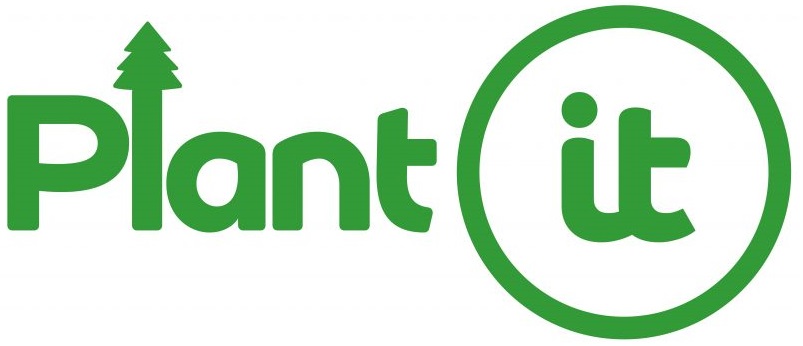Rising Energy Prices and Your Business Cashflow
Energy prices are skyrocketing at an alarming rate, both domestically and for businesses.
Price cap increases, the soaring cost of wholesale energy and the hefty amount of energy companies going bust recently are all fanning the flames when it comes to the squeeze on UK businesses.
With the total value of late payments rising by 20% to £61 billion, keeping your business cashflow healthy has never been more critical. However, towering energy prices present another challenge we must overcome.
Why are energy prices soaring?
The dramatic rise in wholesale energy prices is having a huge impact on the prices we are paying as consumers as suppliers pass these costs onto domestic and business customers. We’re witnessing record highs for the cost of wholesale energy with all signs pointing to further increases throughout the year.
Europe has also experienced a “gas crisis” with a significant shortage of natural gas gripping the continent this winter. The UK imports the vast majority of the energy we use as a nation as we have extremely limited capacity when it comes to stockpiling natural gas. This means we are more exposed to the effects of an increase in energy prices.
A longer and colder than expected winter between 2020 and 2021 resulted in a sharp rise in demand which has contributed to the spike in price of energy.
Geopolitical issues have also affected the price we pay for energy for our businesses. Plans for Nord Stream 2 pipelines that would send 55 billion cubic metres of natural gas directly from Russia to Europe, via Germany and the Baltic Sea, likely won’t be approved until mid 2022. After Germany suspended approval for the pipeline in November 2021, European energy prices soared as a result.
2021 saw 30 energy firms go bust in the UK alone. If you have been impacted by this you’ll know that you’ve likely been moved to another tariff with another supplier significantly more expensive than your previous tariff.
What is the impact on your business cashflow
Many businesses are feeling a particularly tight squeeze at the moment, not helped by inflation and the recent bump in interest rates. The fall-out from this and the strain caused by increasing energy prices means that there has never been a more critical time to ensure your business cashflow is in good shape.
The majority of businesses will be paying more for materials due to inflation, higher monthly repayments on outstanding loans and business credit repayments thanks to higher interest rates and now more on their energy bills. All of these factors coming together at the same time will cause many businesses problems over the next year and we can expect the number of late payments to increase further.
This will affect your business in a couple of ways.
You may not have the cash to pay your own suppliers on time, which can then present an additional set of issues to overcome.
On the other hand you may have cash reserves that allow you to absorb higher outgoings, even temporarily. But what happens when your own customers struggle to pay you on time, would you then be able to pay your own suppliers on time?
Or do you rely on your invoices being paid promptly to make your own payments.
The knock-on effect late payments have on the credit cycle are limitless and impacts thousands of businesses every year. The additional stress we expect to see on business cashflow this year will make matters even worse.
The good news is there are steps you can take to implement a water-tight credit control process that will protect your business cashflow.
Protecting your business from the effects of rising energy prices
An obvious remedy to increased business costs is increasing your revenue. Easier said than done though, rightI?
Acquiring new customers can be expensive in itself. So an alternative could be to increase the price your current customers pay. In most cases, probably not the wisest move if you appreciate the trust of your clients. Your customers may then decide to shop around for a more cost-effective solution.
With business cashflow being so critical ensuring you are actually receiving cash for the work you do should be a high priority. A sale is pointless if you don’t receive the cash to show for it.
Implementing new or improving an existing credit control process doesn’t need to be complicated. As long as you cover the key points of credit control you’ll significantly reduce the chances of late payment.
The basics of credit control
Credit control is a fundamental part of running a profitable business, but it’s also something that many business owners overlook.
What happens when a credit control process isn’t followed?
Chaos!
Checks aren’t made to make sure companies can pay for their orders. Businesses are left scrambling trying to recover the money they’re owed and could potentially fail as a result of late or non-payment!
And the frustrating part is that it doesn’t need to be this way.
A basic credit control process is so easy to implement and as with most things, the basics tend to the be the most effective methods and form solid building blocks for more effective and efficient business processes.
Put simply, there are 3 key components in an effective credit control process that will boost your business cashflow.
Running business credit checks on your customers
This is the very first step in the process, and it is one of the more critical aspects.
A thorough business credit check will help you understand how much of a credit risk a company poses to your business. You’ll get to know what a suitable credit limit would be given their financial situation, if they have a track record of late or non-payment, if they have any outstanding Country Court Judgements (CCJs) and any financial information readily available such as turnover and profit/loss accounts.
Check-it goes a step further though, giving you even deeper credit intelligence. Through our Unsecured Creditor Claims data we can tell you of any losses suffered by your customer as a result of their own clients going into administration or liquidation. This additional insight is priceless as credit reports don’t provide this information, so don’t reveal everything you need to make a properly informed credit decision.
Our integrations with Companies House and The Gazette provide more company intelligence allowing you see any notices regarding particular businesses as well as full company data helping you mitigate credit risk more effectively.
Not only that, we’ll also monitor any changes to company credit reports automatically so you’re always kept in the know about your customers.
Chasing overdue invoices
In the event of any payments from your customers not arriving on time you must have a plan in place for pro-actively chasing your customers until you receive payment.
This is where sending late payment chasers come in.
One gentle chaser or reminder should hopefully be enough to ensure quick payment. However, just to make sure, you should have another 3 chasers prepared to send at different intervals. For example:
Invoice is 1 day overdue – Send first gentle chaser
Invoice is 7 days overdue – Send 2nd chaser
Invoice is 14 days overdue – Send strong 3rd chaser
Invoice is 30 days overdue – Send final notice before taking further action
If you’re not used to chasing invoices in this way then the above might sound like an awful lot of work.
Chase-it provides the perfect solution!
Automatically send late payment chasers according to your own customisable schedule. Simply prepare your set of chasers just like the above (don’t worry, we have ready to use templates ready to use). Decide at which intervals you’d like them to be sent and voila! Late payment chaser emails, letters and SMS will go out automatically just like clockwork.
Our smart integration with leading accountancy apps such as Xero, QuickBooks, Sage and FreeAgent means Chase-it will automatically know which invoices are due, from which company and when they were due, eliminating the legwork for you!
Taking it a step further to recover your commercial debt
In the event you have a particularly problematic customer it can easily lead us to a state of despair. Especially with rising costs, meaning cashflow is critical.
What are your options when you have a customer that continually refuses to pay or gives you the silent treatment?
Collect-it gives you a needed safety net for these situations. Partnering with UK leading Commercial Debt Recovery Specialists Darcey Quigley & Co, we offer a solution for recovering your unpaid invoices all from within the Know-it platform!
Boost your business cashflow free for 30 days!
Sound good?
Know-it is free for 30 days!
You’ll get full functionality of the Know-it platform as well as 1 free credit report. What are you waiting for?
Sign up free today, no credit card required!
Lynne is the Founder and CEO of Know-it!
She is a passionate, driven and forward-thinking entrepreneur determined to help resolve the late payment crisis gripping SMEs.
Having worked within the credit management industry for over 27 years and ran UK leading commercial debt recovery specialists Darcey Quigley & Co for over 16 years, Know-it was devleoped to make credit control more accessilble for SMEs to help them effectively mitigate credit risk, reduce debtor days and boost cashflow!
Connect with me on LinkedIn!



































